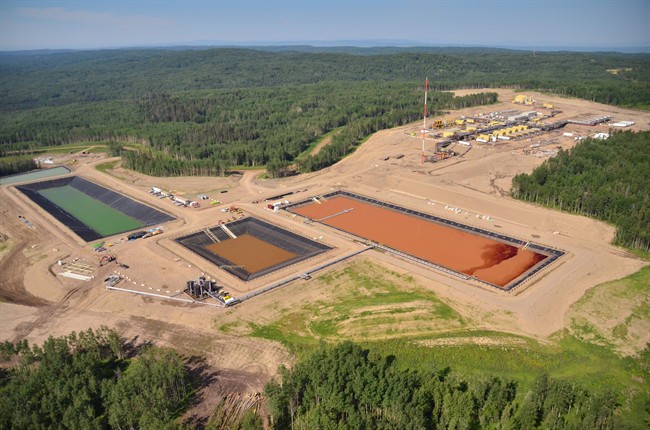Research suggests hydraulic fracking can cause earthquakes in at least two ways – and one of them can cause tremors months after the activity stops.

“The seismicity is persistent after the operations are completed,” said David Eaton, a University of Calgary seismologist, whose paper has been published in the journal Science.
Eaton has been studying earthquakes that have shaken the Fox Creek region of northwestern Alberta for years.
WATCH: Fracking suspected of causing Fox Creek, Alberta earthquake

The largest, measuring between 4.2 and 4.8 on the Richter scale, occurred in January. The area, which is in the centre of the Duvernay oil and gas field, has experienced hundreds of tremors since 2013.
Scientists have long known the shakers are associated with oilfield practices.
In the United States, underground waste-water disposal seems to be the cause. In Alberta, research points to hydraulic fracking, which involves pumping high-pressure fluids underground. That creates tiny cracks in rock and releases natural gas or oil held inside.
READ MORE: Link between earthquakes and fracking being explored in Pennsylvania
How the widely used technique creates earthquakes has largely remained a mystery – until now.
Eaton and his co-author Xuewei Bao used a mathematical algorithm to isolate and locate more than 900 earthquakes in the Fox Creek area.
“That gave us the ability to image the fault structure,” Eaton said. “We could see that there were steeply dipping faults that extended from the injection level down into the Precambrian basement.”
The pair also realized there were two hairline faults that hadn’t been spotted in previous work.
READ MORE: Fracking, not disposal, behind human-caused earthquakes in western Canada: study
One fault, some distance from the fracking site, quaked as fluids were pumped down and stopped when the pumping did.
Eaton said those quakes were caused by stress changes on the rock from the pumping. When the pumping ended, the stress was reduced.
But the other fault, very close to the site, remained active for months.
The researchers combined their precise fault-mapping with equally precise data on how much fluid was pumped underground, when it was pumped and where.
READ MORE: The mysterious connection between fracking and earthquakes
Eaton concluded the ongoing movement in the nearby fault was caused when injected fluids infiltrated tiny spaces in the porous rock and increased what’s called pore pressure.
“If that pressure increases, it can have an effect on the frictional characteristics of faults,” Eaton said. “It can effectively jack open a fault if the pore pressure increases within the fault itself and make it easier for a slip to initiate.”
The increased pore pressure was what made the difference between earthquakes along the two faults, said Eaton.
“(There’s) persistent activity in the case where fluids penetrated into a fault.”
READ MORE: FOI docs reveal BC Hydro concerns over fracking
Eaton said that although the most powerful quake occurred due to pore pressure, it’s too soon to conclude that more dangerous tremblors are created that way. The next step, he said, is to better understand the relationship between pore pressure changes and earthquakes.
He’d like his findings to have an impact on how hydraulic fracking is regulated in the future.
“It’s our hope this will contribute to science-informed regulation,” he said. “We’re also hoping this will improve risk assessment.”



Comments